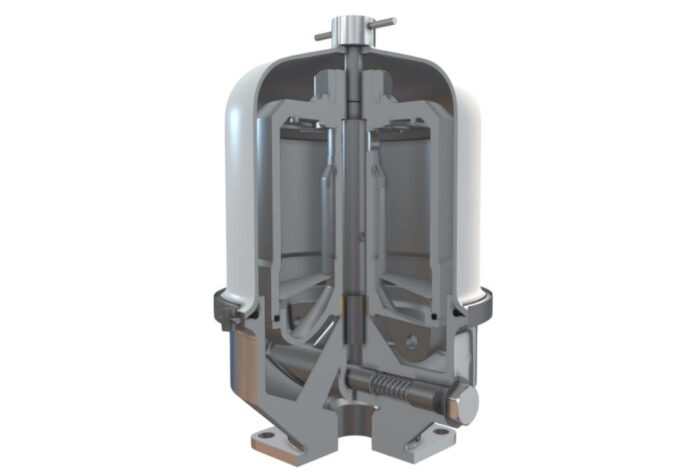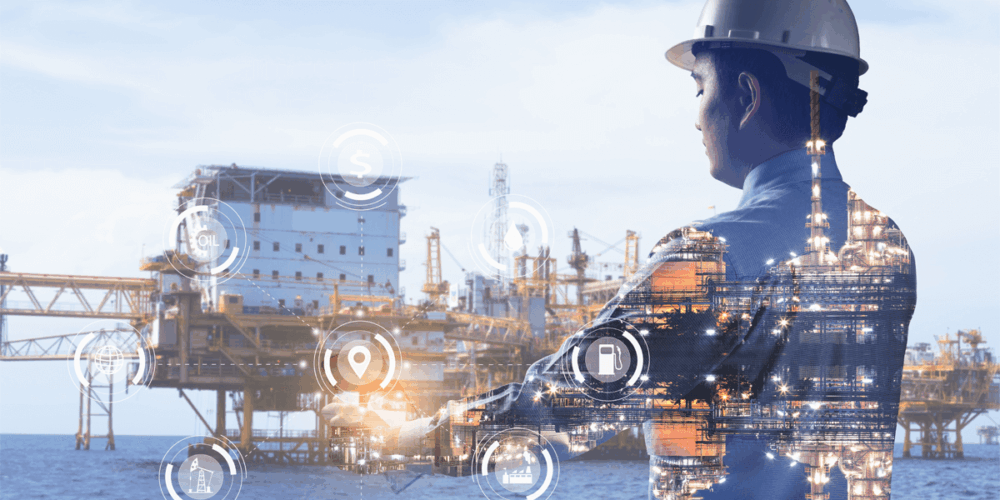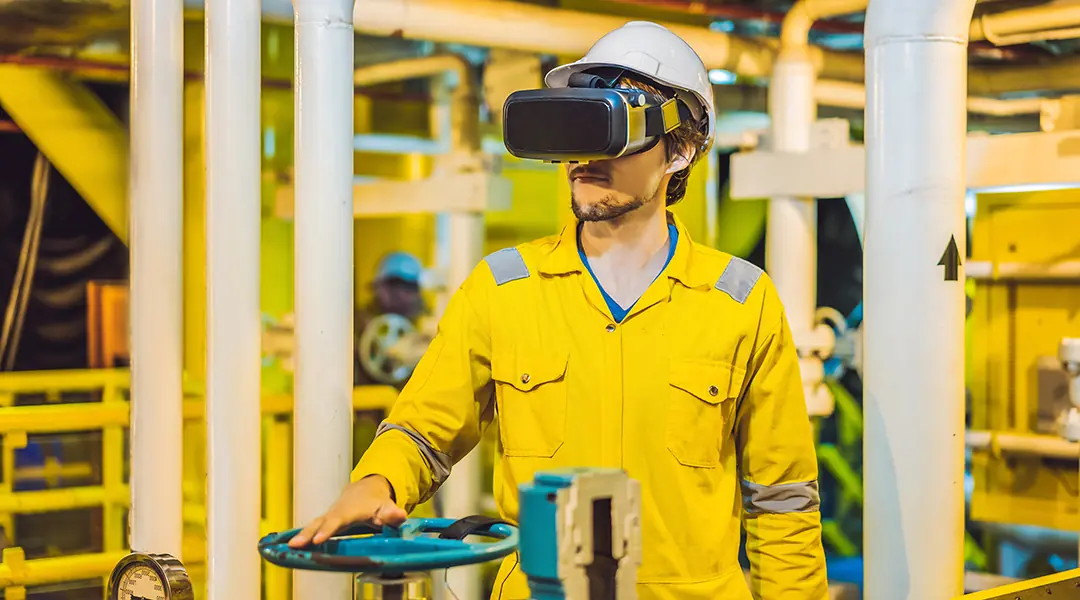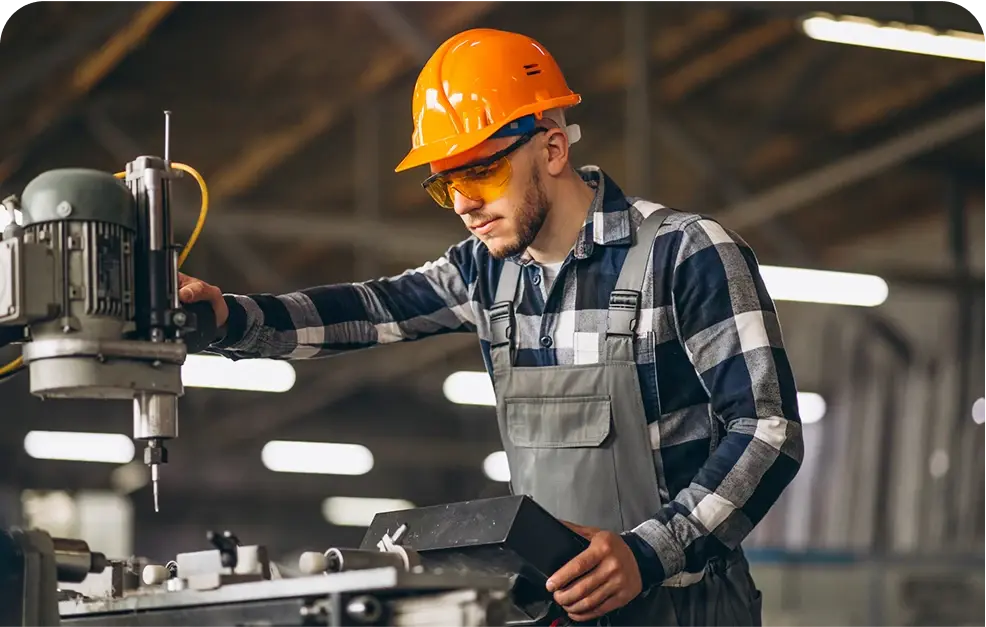
The oil and gas industry is one of the world’s most technical, dangerous, and demanding industries. Engineers and operators who work within the offshore drilling rig and the refineries, and the pipelines must be able to coordinate and operate complex systems. They also must do so according to stringent safety and efficiency standards.
Traditionally, training has relied on learning through traditional classroom training, manuals, and site visits. However, with the oil and gas industry constantly evolving, and now seeking to fill a growing skills gap, these approaches alone are no longer enough. Enter interactive 3D learning – a technology that is transforming how oil and gas employees and contractors retain and use knowledge.
With the emergence of platforms like saVRee, employees can now take cutting-edge online courses for the oil and gas industry that include technical theory and immersive 3D models of equipment. These technologies can provide the link between the classroom and practical application, and make learning safer, more convenient, and more powerful.
In this article, we discuss how interactive 3D learning is transforming training in the oil and gas industry, the benefits it provides compared to more traditional methods, and why this technology is the future of workforce development in the oil and gas industry.
The Challenges of Training in the Oil & Gas Industry

Oil and gas training faces specific challenges:
- Safety Issues: Current training on the job is unprecedentedly real and risky. Training could occur on an offshore rig or at a height inside a pressurized pipeline.
- High Costs: There may be substantial expenses for physical equipment, simulators, and travel for training.
- Systems are Complex: Complex equipment, including compressors, turbines, product purifiers, etc., is frustratingly difficult to explain visually through still images or diagrams.
- Global Employee Population: The oil and gas sector employs millions of people across the globe. Providing seamless training is a challenge of scale.
- Constant Upgrading: Digitalization, new technologies, and stricter environmental regulations require continuous upskilling.
Unless employers use methods outside of traditional instruction, these demands are impossible to meet; hence the need for digital innovation.
Traditional Training vs. Online Interactive Training
Let’s look at conventional oil and gas training practices and the new digital world, where training is enhanced by new 3D-enabled training approaches:
Traditional Training
- Delivery: In-person, classroom contextually based lectures, manuals, and on-site demonstrations
- Safety: Hazardous environment exposure, unsafe situations
- Flexibility: Set schedules, location-based experiences
- Cost: High tuition, equipment, and travel costs
- Engagement: Passive learning experiences, no interaction, and limited visuals
- Industry Relevance: Slow to change, slow adoption of new standards and technology
Online 3D Training
- Delivery: Online modules with interactive 3D visuals
- Safety: 100% safe, risk-free simulated environments
- Flexibility: Anytime, anywhere learning, self-paced modules
- Cost: Great value, scalable, subscription access
- Engagement: Immersive, interactive experiences
- Industry Relevance: Up-to-date with the latest tools and practices
The traditional approach holds merit for accrediting learners and hands-on field experience, but immersive interactive 3D learning will facilitate learning but also engagement, scale, and realistic scenarios.
How 3D Visuals Transform Oil & Gas Training

1. Making Complex Systems Understandable
Oil and gas equipment—such as compressors, heat exchangers, pumps, and turbines—is tough to grasp with 2D drawings. With 3D models, learners can examine components by exploring and spinning, gaining more understanding of the operation of each component within a system.
2. Increasing Engagement and Retention
Interactive learning has proven, over time, to be highly effective in improving retention of knowledge. Rather than just reading a manual passively, learners interact with models and simulations that reinforce memory and also develop problem-solving skills.
3. Providing Training in a Safe and Risk-Free Environment
With 3D learning, learners can now learn about dangerous processes—like pressurized systems, combustion reactions, to offshore drilling—all without being in danger.
4. Bridging the Gap between Theory and Practice
Theory, such as any formulas and engineering principles, is often an abstract idea in a textbook. When combined with a 3D simulation, learners can tangibly see theory applied to a real system—giving them stronger retention when it comes to practical aspects of the theory.
5. Supporting a Global Workforce
The oil and gas industry is global. Operations span the globe, crossing continents. This makes it difficult to enforce uniform learning standards across all employees. Online 3D training gives all employees access to the same learning regardless of location.
The Role of saVRee in Oil & Gas Training

saVRee is at the cutting edge of providing immersive digital education for engineers and technical people. Their oil and gas online courses combine world-class subject matter expertise, together with interactive 3D models, to provide a better learning experience.
What is unique about saVRee’s training?
- 3D Models and Animations: Look at their equipment in detail, including compressors, pumps, turbines, and industrial systems.
- Industry Relevant Content: Courses are based around real-world systems used in oil and gas, not just theory.
- Flexible Solutions: saVRee is there for individual learners, right through to enterprise learning and training.
- Accessible: Global learners can access high-quality training without the need to relocate or work with expensive specialized equipment.
- Lifelong Learning: Engineers can upskill continuously as new modules and content are continuously released and updated, and to maintain currency with equipment process changes.
By merging theory and immersive visuals, saVRee gives learners the knowledge and confidence to step into the oil and gas industry and continue to develop.
Why Digital Courses Are the Future of Oil & Gas Training
The oil and gas industry is entering a rapid digital transformation journey. Companies are utilizing automated processes, remote monitoring, and predictive analytics—creating a workforce that is digitally fluent and flexible.
Use of digital training is the solution to bridge this gap. The advantages of online 3D learning are:
- Scalable: Train thousands of employees at the same time across your global operations.
- Consistent: By training the future workforce using the same training content, you can consistently ensure the quality level across all regions and teams.
- Efficient: Rapidly onboard recruits and up-skill current workers, which reduces downtime and drives productivity.
- Future-proofed: Courses can be quickly updated to include new technologies, environmental regulations, or best practices within the industry.
Hybrid training models are being developed with the reduced competency gap, where on-the-ground field work is complemented by digital 3D learning, seen as the new norm.
Final Thoughts
The oil and gas sector is subject to extreme pressures and challenges, including safety considerations, technological complexities, and ongoing learning. While traditional training will continue to have a role, it simply isn’t enough on its own anymore.
Interactive 3D learning is fundamentally changing the way people in the oil and gas sector are learning to train, offering a more engaging, flexible, and economical approach to skills development.
With providers like saVRee, students and professionals in the oil and gas industry can access excellent, engaging, online educational learning resources that offer technical depth and an engaging visual experience. Whether you’re a school leaver seeking to enter the workforce or you are already working and seeking to upskill, digital training has been developed to help the oil and gas sector bridge the skills gap and substantially improve its workforce in the future.
The future of oil and gas training is not only online, it is interactive, visual, and transformative.








